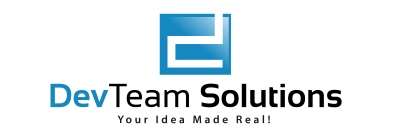Have you ever wanted to create a business website? Don't want to pay out large sums of money?
Our simple non technical guide is the one stop help and assistance you need to create a beautiful looking and professional website in minutes.
Think of a Name
The chances are you know what your business is all about. Are you selling something, or do you offer a service or trade? Either way your business will need a name and your websites name should reflect your business. Today's challenge is coming up with a fun and unique name that will be both catchy and say what you do. The best place to start is to write down a bullet list of keywords that reflect your business. These don't have to be just practical words, but begin with the first things that come into your head. You'll need to register a domain name and it's generally a good idea that the domain reflects your business and most of the time it should be the same name as your business. Take the keywords you thought about earlier and combine some to see if you can make up and name. Chances are the first few names you come up with will be taken, so check to see if your website name (domain name) is available. If this is your first website, stick with the .co.uk and .com domain names. i.e www.mysite.com or www.mysite.co.uk. You can check if your name is available by visiting a site such as https://www.whois.net/. If possible try to think out of the box to get both the .co.uk and .com
Selecting a Hosting Provider
This is where it can get tricky, but try not to be put off by some of the sales speak on some of the providers websites. We can offer very competitive web hosting here at DevTeamSolutions Limited and can help guide you through the process, however please do search on Google for hosting providers in the UK and spend some time comparing and seeing what seems comfortable in terms of pricing and ease of use. We can recommend a number of other hosts if you choose not to go with us, please do ask. The host you choose with depend on the scale of site you are looking to create and the amount of content and expected visitor numbers. We would recommend choosing a hosting package that includes a content management system such as WordPress, or similar, with at least 100mb disk space (you don't need that much for a simple business site).
Choosing a Content Management System
In our opinion one of the best content management systems on the market is WordPress. The best part is that it's free. It's open source and updated all the time and allows you to select from a wide range of additional features via plugins and themes. Some of the plugins and themes are chargeable and often the best themes are not free. However we can help set-up a WordPress site for you will all the features you will ever need including full search engine optimisation, analytic to see how well your site is doing, and even eCommerce. We have used many content management systems in the past and have found WordPress to be the best and easiest by far. However which ever one you choose, please ask for a full demo before parting with any cash, and ensure it's not only simple to use, but easy to add new pages and content. We are also able to recommend other CMS systems, and can even write a bespoke one to meet your exact requirements. We are more than happy to help, contact us today.
Storyboard your website
You may want to do this before you purchase any package to ensure you are not over purchasing.
You will need an A4 piece of paper for each page of your site. The paper represents a page on the site. Each page should have a title and you should try to draw roughly what you want on the page. Don't write any paragraphs or draw the pictures, put in place holders for these. Ensure each page is specific to the content it will contain and don't try to include too much on one page.
Once you have all the pages you need, think about how those pages will connect with other pages on the site. Take another page of A4, and draw the heirarchy of your site, the first page being your home page, and then 2nd level pages that will likely be navigated to via your sites menu. Then you may have a 3rd layer of pages under that. Try not to make your page layout too complicated.
Sourcing Images
You can't just search Google for an image and just use one you find. Often photos are protected by copyright and you could get into trouble by using unautorised material. There are 2 good options to getting good quality photos for your site. The easiest and trouble free option is to take the photos yourself if you have a good enough camera. Chances are though that you are not a photographer. The next best option is to visit a stock photo site like iStock and pay for some high quality images. They are not too expensive, but budget at least two hundred pounds for sourcing the right images. Believe me, it will be well worth it. The advantage of iStock is that you can get animations as well as photos and videos to use on your site.
